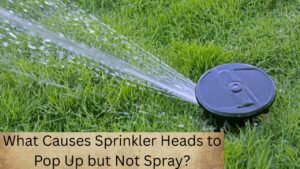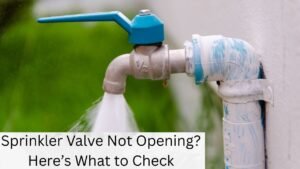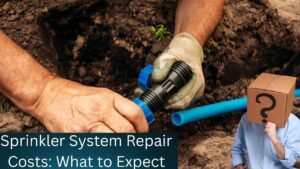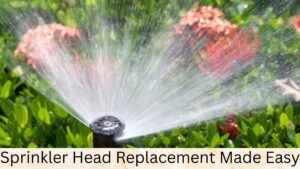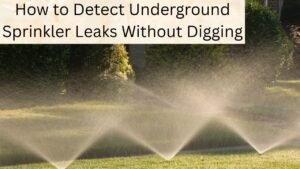Introduction
Ever noticed a soggy patch on your lawn or heard a persistent hissing sound? These could be signs of a leaking sprinkler pipe. Even a small leak can waste hundreds of gallons of water over time, leading to higher bills and potential lawn damage. But don’t worry; this easy-to-follow guide will empower you to fix that leak yourself, saving you time and money.
We’ll break down the process into manageable steps, making it accessible for any homeowner. Whether your system uses PVC or polyethylene (poly) pipes, we’ve got you covered.
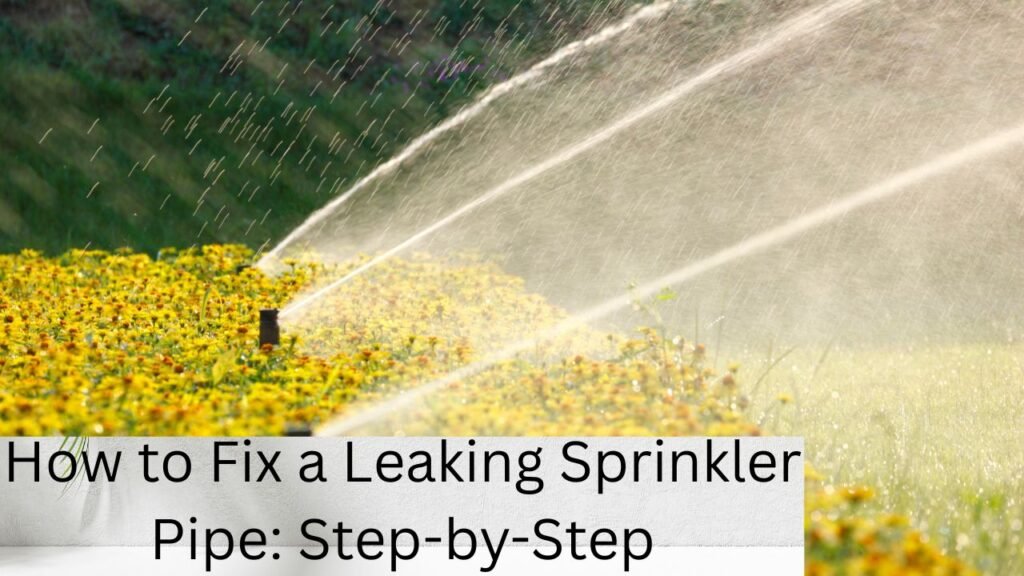
Identifying the Leak
Before grabbing your tools, it’s crucial to pinpoint the leak’s location. Accurate identification ensures an effective repair.
Common Signs:
- Wet Spots: Unusually green or damp areas on your lawn, even when the system hasn’t run recently.
- Hissing Sounds: Indicates water escaping under pressure.
- Low Water Pressure: Sprinkler heads not spraying as far as they should.
- Puddles: Water pooling around sprinkler heads or valves.
Action Steps:
- Run Each Zone: Activate each sprinkler zone for a few minutes, observing for any anomalies.
- Mark the Spot: Once identified, mark the leak area with a flag or stake.
- Turn Off the System: Shut off the water supply to prevent further leakage.
Tools and Materials Needed
Having the right tools makes the repair process smoother.
Essential Tools:
- Shovel: For careful digging to expose the pipe.
- Pipe Cutter or Hacksaw: To remove the damaged section.
- Measuring Tape: Ensures accurate cuts and fittings.
- PVC Primer and Cement: For bonding PVC pipes.
- Barbed Fittings and Clamps: Used primarily for poly pipes.
- Slip Fix Couplings: Useful when there’s limited pipe movement.
- Gloves and Safety Glasses: Protective gear during the repair.
Optional but Helpful:
- Marking Paint: To outline the dig area.
- Teflon Tape: Ensures a tight seal on threaded connections.
Preparing the Area
Before diving into the repair, proper preparation is key.
- Call Before You Dig: In the U.S., dial 811 to locate underground utilities.
- Turn Off Water Supply: Shut off the main sprinkler valve.
- Relieve Pressure: Open a sprinkler valve to drain residual water.
- Dig Carefully: Use a shovel to excavate around the leak, creating enough space to work comfortably.
- Expose the Pipe: You should be able to clearly see the pipe and the source of the leak.
Repairing the Leak
The repair method depends on the type of pipe in your system.
For PVC Pipes:
- Cut Out the Damaged Section: Ensure clean, perpendicular cuts for a good seal.
- Deburr the Edges: Smooth out any rough edges to prevent leaks.
- Apply Primer: This softens the pipe for better cement adhesion.
- Apply PVC Cement: Quickly join the new section using couplings.
- Hold Firmly: Maintain pressure for a few seconds to ensure a strong bond.
For Polyethylene (Poly) Pipes:
- Cut Out the Damaged Section: Use a pipe cutter for a clean cut.
- Insert Barbed Fittings: Push them into both ends of the pipe.
- Secure with Clamps: Tighten until snug but avoid overtightening to prevent damage.
- Check Alignment: Ensure the pipe is straight to prevent future leaks.
Temporary Fixes:
For very small leaks or while waiting for permanent repair materials:
- Repair Tape: Wrap tightly around the leak.
- Epoxy Putty: Apply over the leak and let it cure.
Caution: These are not long-term solutions and should be followed by permanent repairs promptly.
Testing the Repair
After completing the repair:
- Turn On Water Slowly: Gradually increase pressure to check for leaks at lower pressure first.
- Inspect the Repair: Look for any signs of leakage.
- Listen Carefully: Pay attention for any hissing sounds.
- Run the System: Operate each zone to ensure proper functionality.
If the leak persists, re-evaluate the repair or consider seeking professional help.
Troubleshooting Common Issues
- Leaky Joints: Check for debris or damage to the fitting itself.
- Cracked Pipes: Ensure the replacement section is properly aligned and secured.
- Low Water Pressure: Inspect for additional leaks or clogs in the system.
- Incorrect Fitting Sizes: Verify that barbed fittings and pipe diameters are compatible.
Maintenance Tips
Regular maintenance can prevent future leaks.
- Seasonal Inspections: Check the system at the beginning and end of each watering season.
- Winterization: Drain the system before the first freeze to prevent pipe bursts.
- Avoid Heavy Machinery: Don’t drive over sprinkler lines.
- Backflow Preventers: Ensure they’re functioning to prevent contamination.
For more seasonal tips and system maintenance how-to, explore the full Sprinkler Repair Section.
Conclusion
Fixing a leaking sprinkler pipe might seem daunting, but with the right tools and guidance, it’s a manageable DIY task. By addressing leaks promptly, you conserve water, save money, and maintain a healthy lawn. Remember, regular maintenance is key to preventing future issues. You’ve got this!
